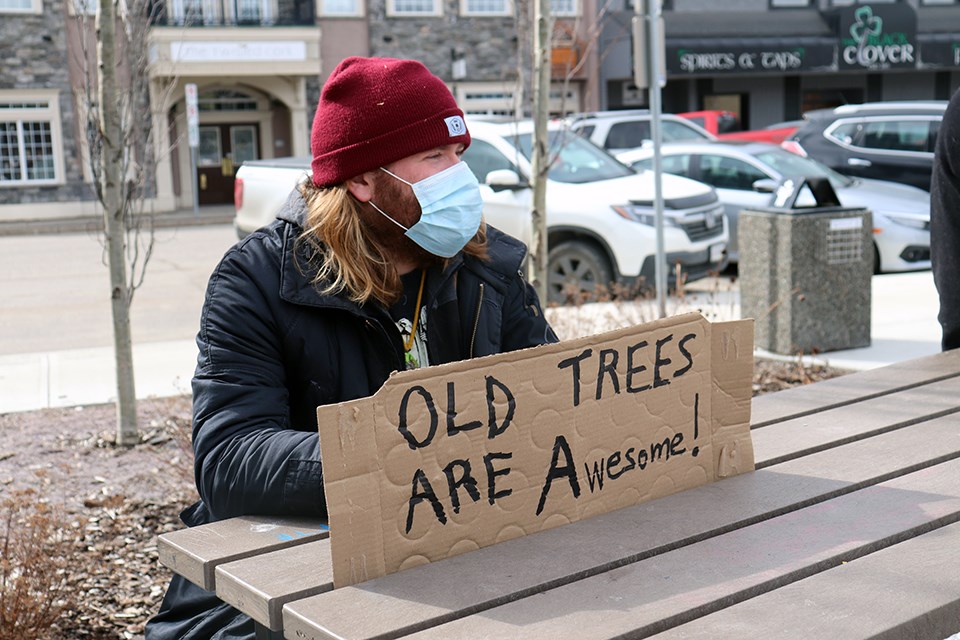Conservation North Director Michelle Connolly said this was likely the ‘last chance’ to make the province aware of their forest preservation.
Today (March 26), a determined group of supporters rallied together to publicly express their concerns about the current state of old-growth forests within Prince George’s vicinity, some more than 350 years old, and why it needs to be preserved and not ignored.
In April 2020, B.C. Premier John Horgan and the government’s Forests Ministry received a report, known as the Old Growth Strategic Review, urging immediate action or risk permanent biodiversity loss among old forests in the north-central region, and others.
It recommended to act within six months, but with limited movement, Connolly says now is the time more than ever to save local ecosystems.
“Nothing has happened and we’re all wondering why. What we do know is that we are regularly fed information that is not accurate about our primary forests, which serves to uphold the status quo,” she said in an address to the crowd.
“This misinformation comes from the upside-down world of powerful lobby groups, like the Council of Forests Industries, the Forests Products Association of Canada and the companies they represent.”
Known as ‘Rebellion for Forests,’ the rally was held at Wood Innovation Square Park, located at Fifth Avenue next to the city’s Wood Innovation and Design Centre.
With signs in hand and following COVID-19 protocols, roughly 70 participants showed their support for protecting old-growth forests, asking the province to halt harvesting habitats and calling for leadership.
“There’s more work to be done,” said UNBC scientist Pam Wright as the report also indicates under 10 per cent of old-growth forests are left in B.C.
“Few initiatives have received government support. So to the Premier and [NDP] cabinet, it’s time. Time to take action towards a just, equitable transition to a green economy.”
Art Fredeen, another UNBC scientist, says the region needs to be a ‘geography of hope’ and continue to recognize the Indigenous territories it’s seeded on, noting cultures also rely on forests as a spiritual resource.
“I am so grateful that things are changing. I know they’re slow in changing, but they are changing and I think this recognition of Indigenous culture, language, their rights and title is one of the most phenomenal things. It’s a privilege to live on these lands. These fights for the environment have been going on for centuries, if not a millennia.”
Lheidli T’enneh musician Kym Gouchie closed the rally with a traditional song.
In February, Conservation North also released the first province-wide cumulative impacts map and the first visual account of the last remaining old-growth forests in the province.
“The cumulative impacts of industrial forestry and other forms of land conversion, such as agriculture and road development, have never been displayed for public view before now, despite the fact that the vast majority are occurring on public lands,” the group said in an earlier statement.
The project shows where there are opportunities to conserve primary forests, as well as where management for restoration and/or production of wood products are a better option.
- with files from Hanna Petersen, PrinceGeorgeMatters



